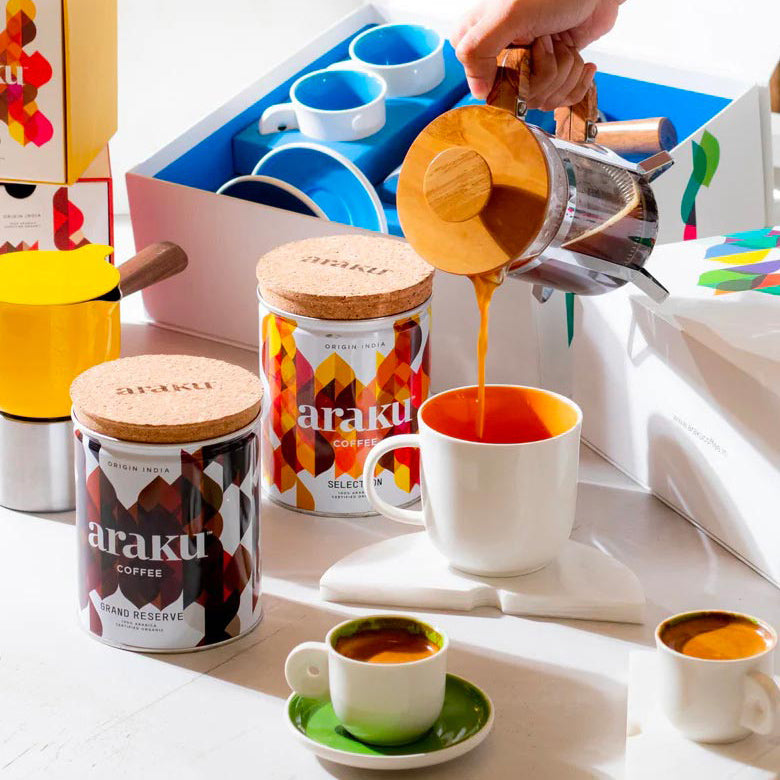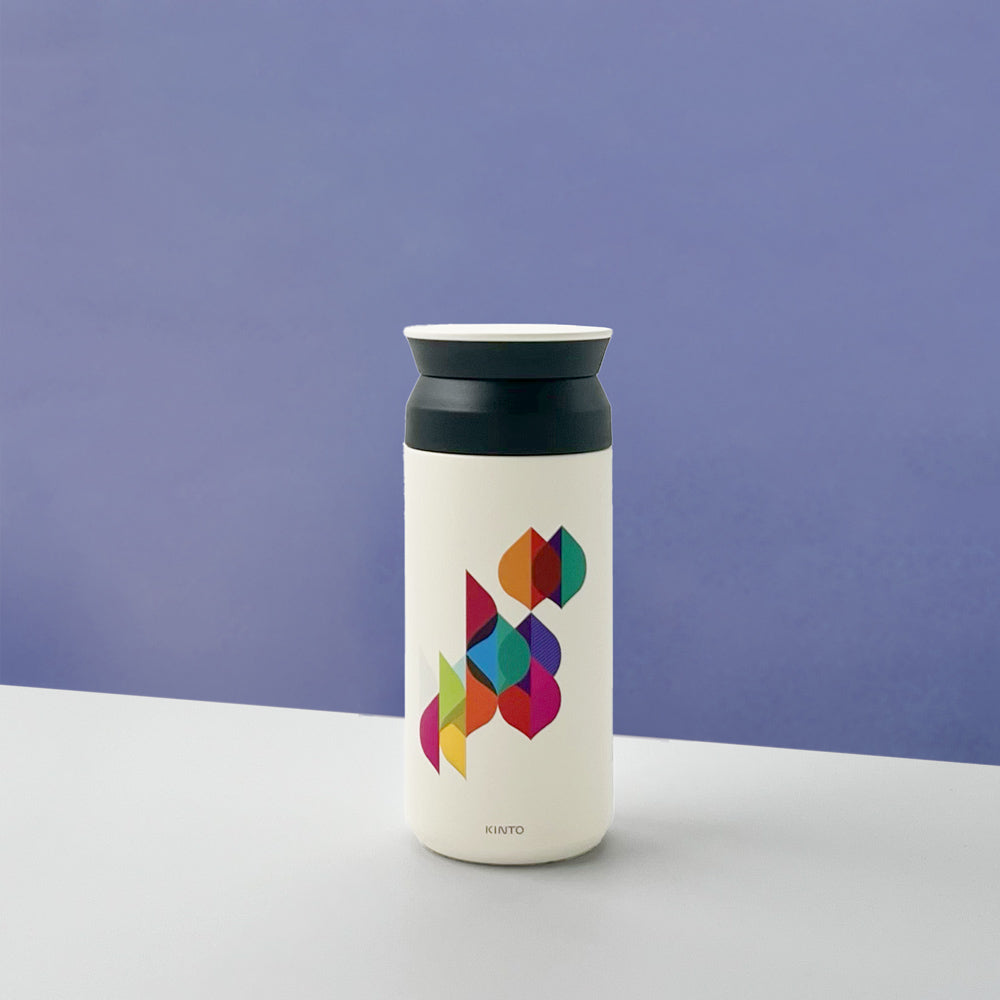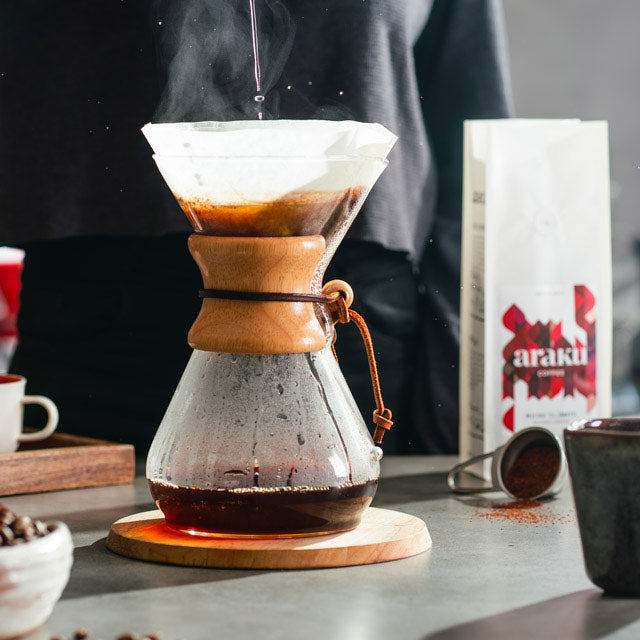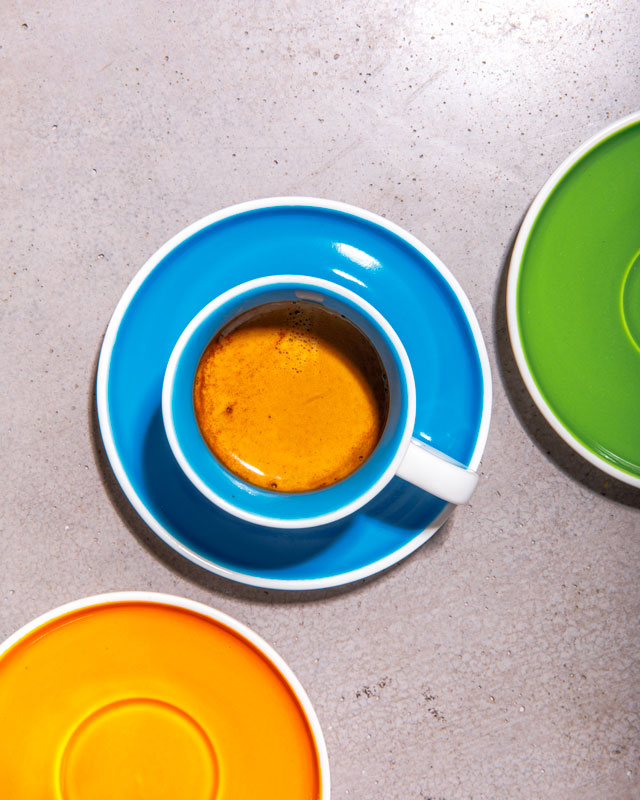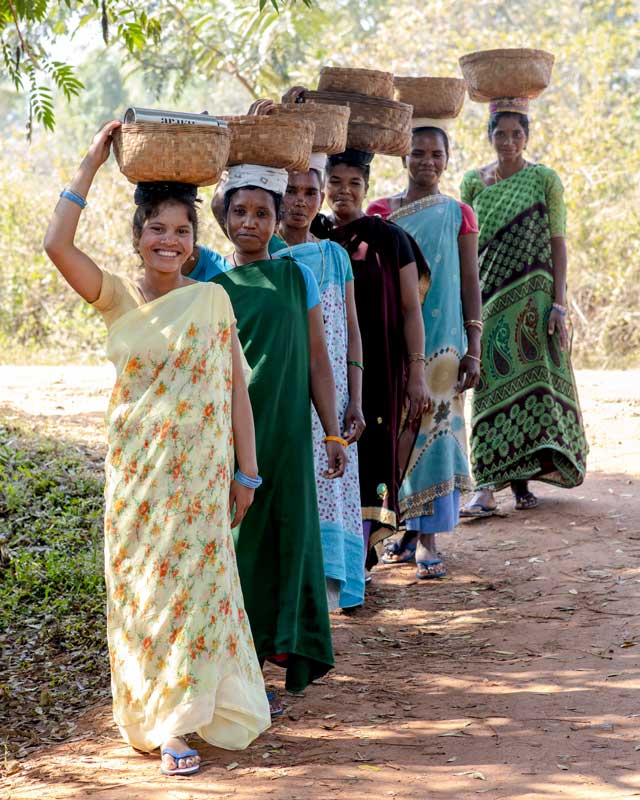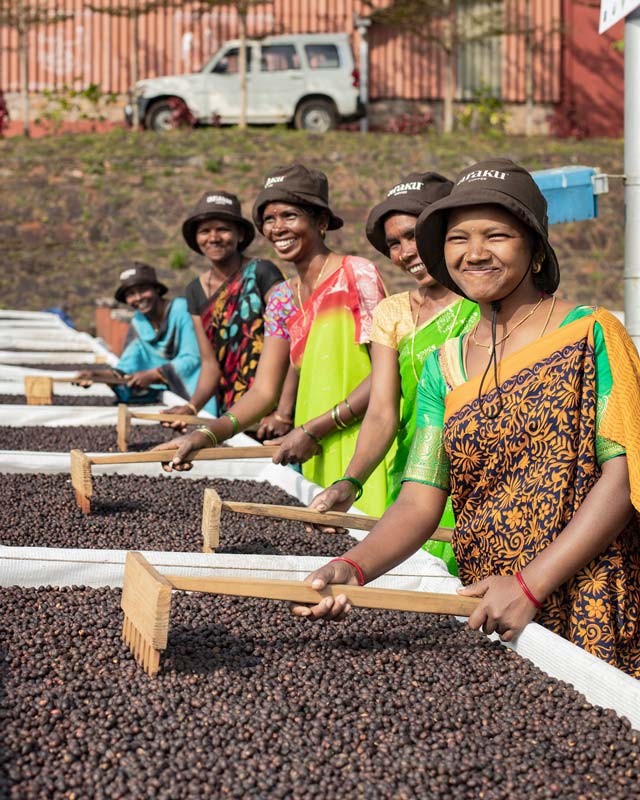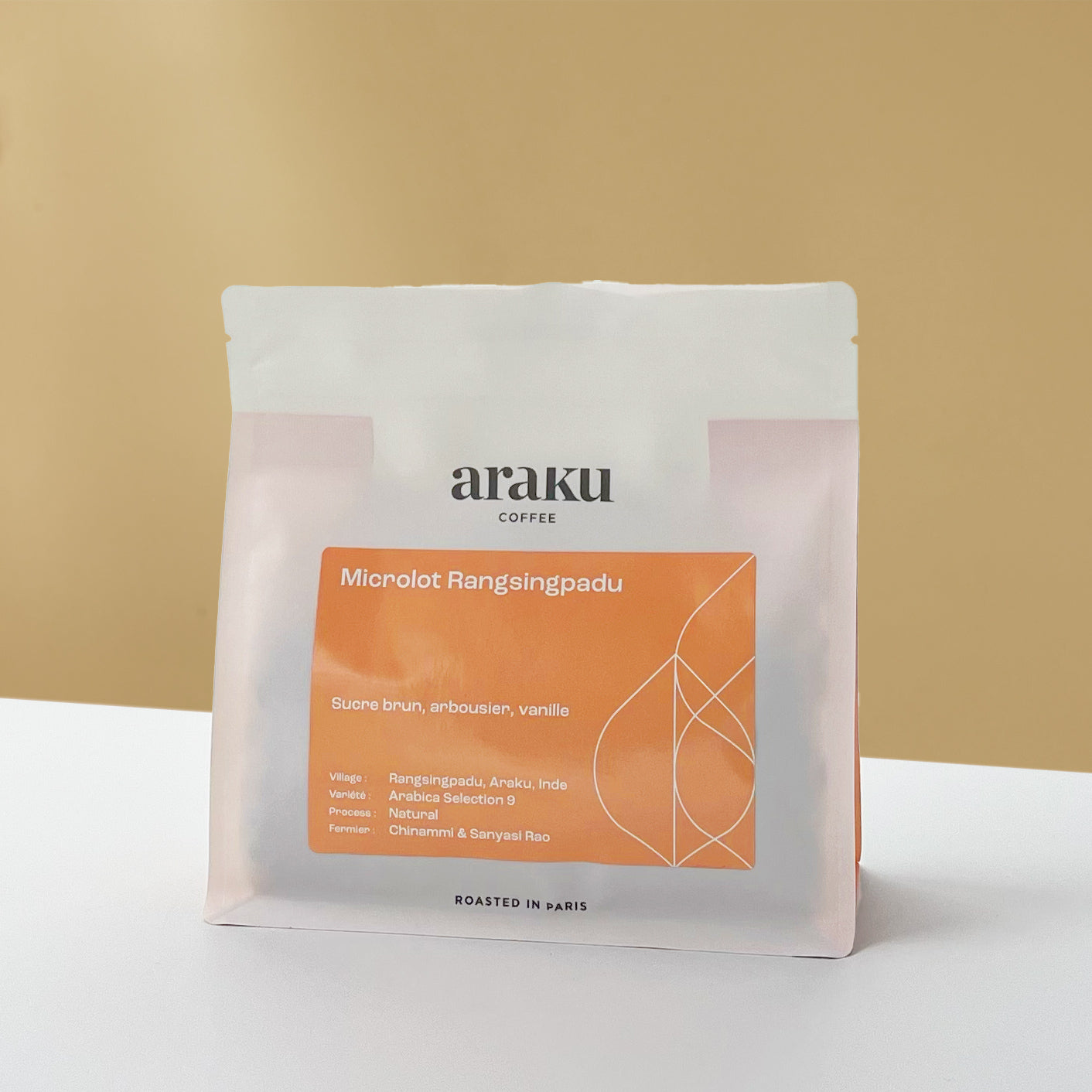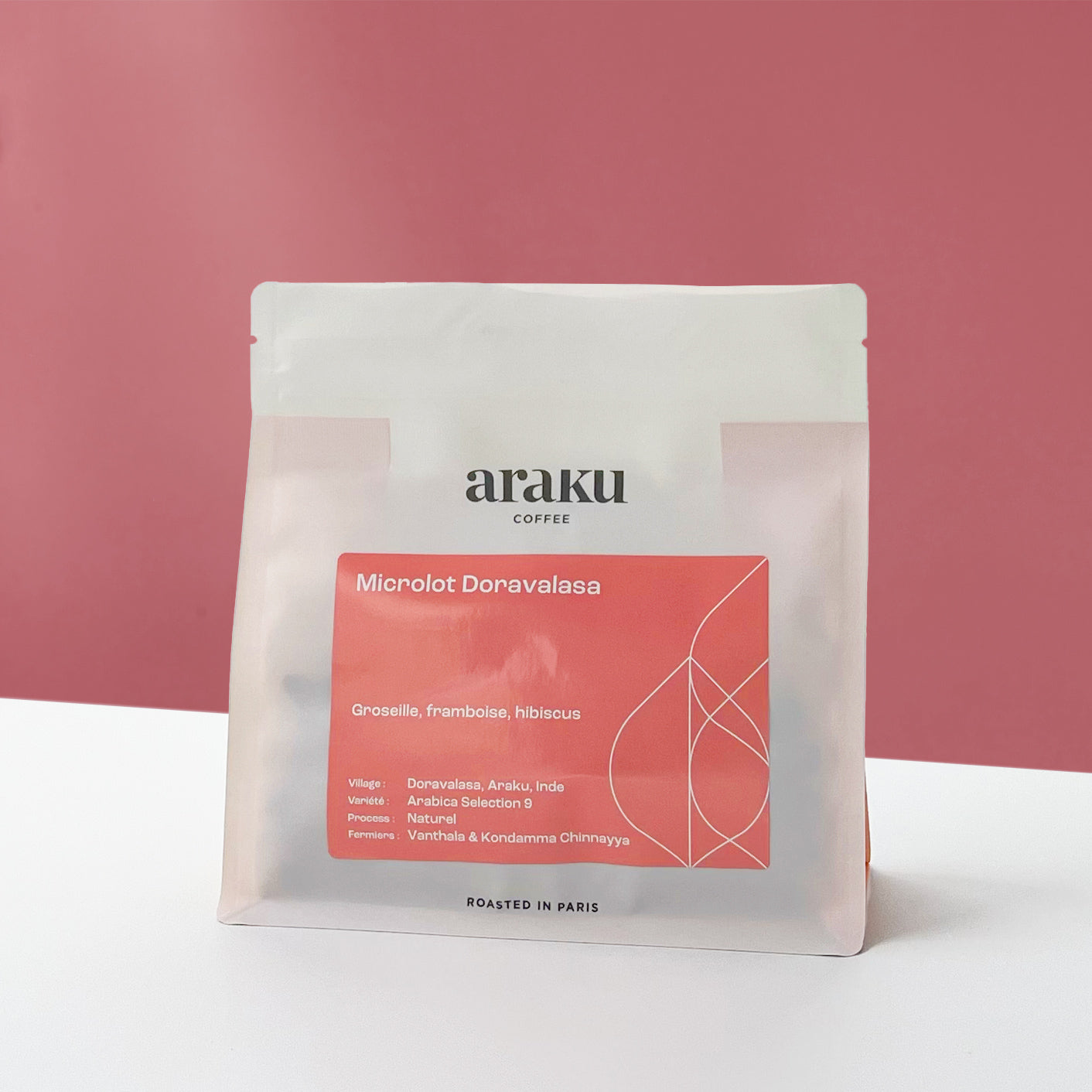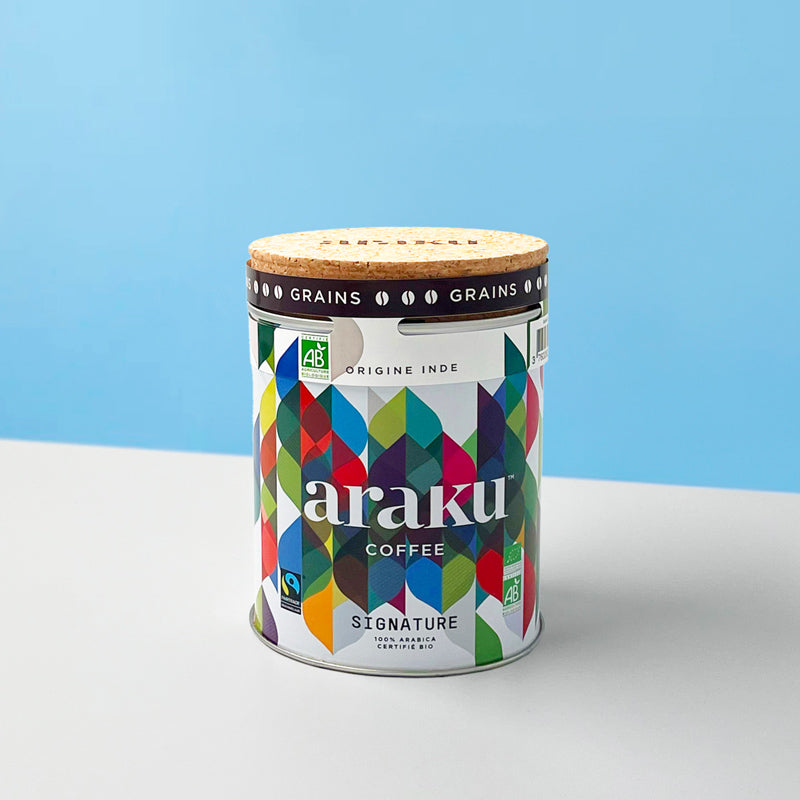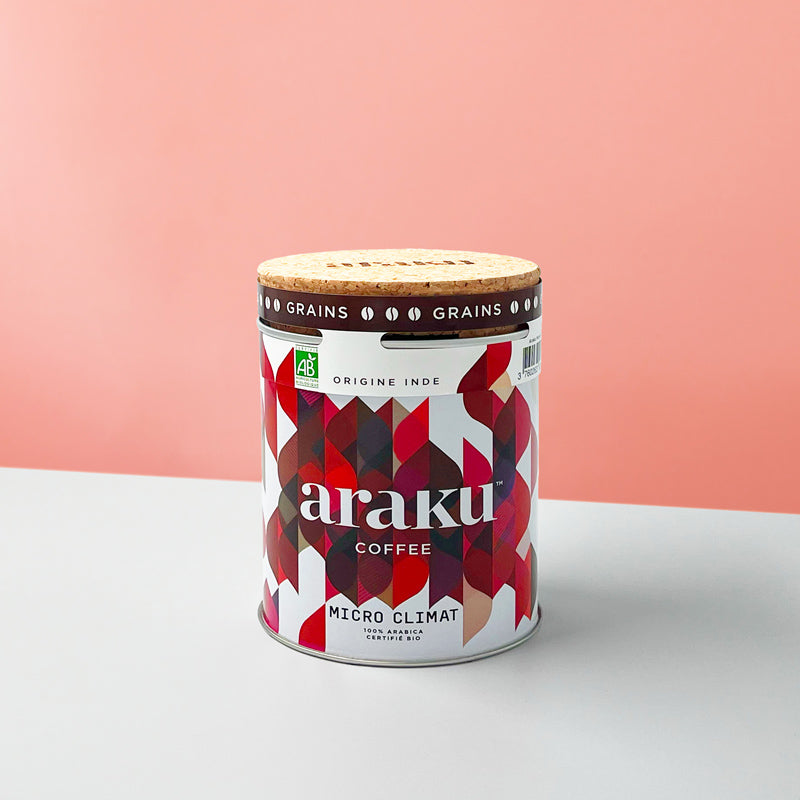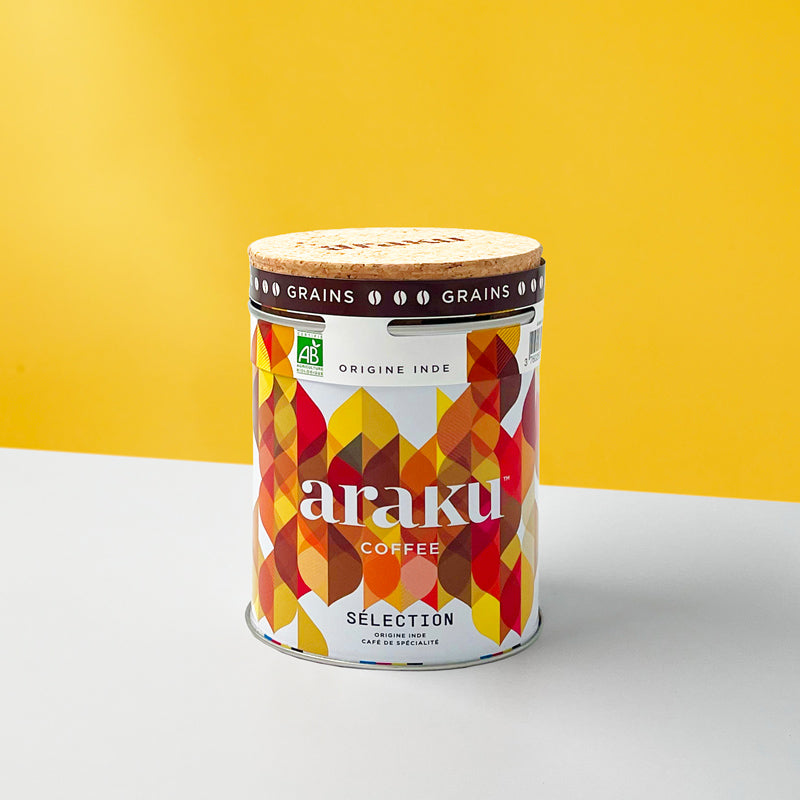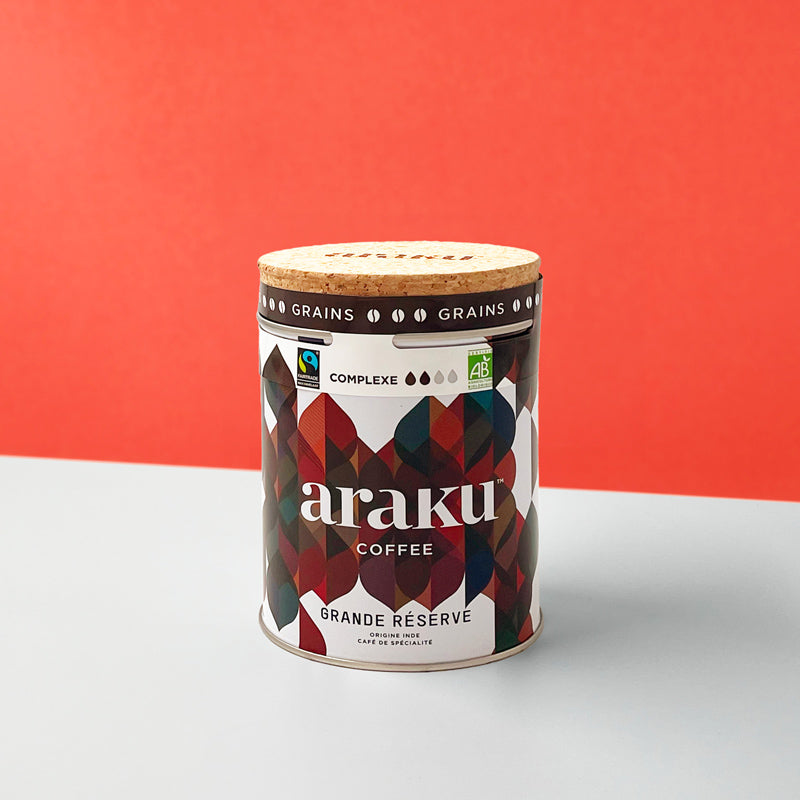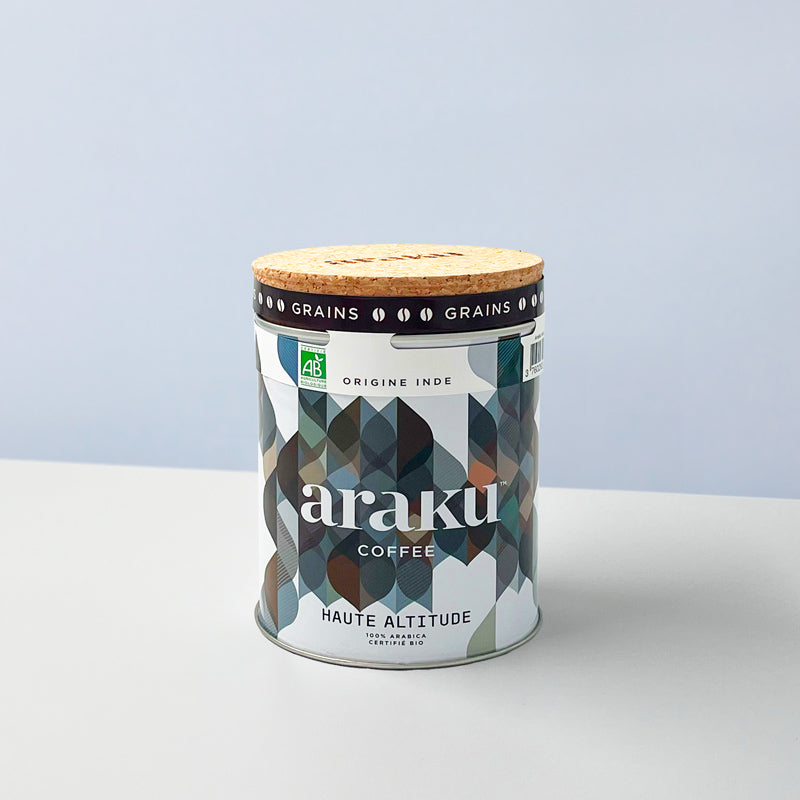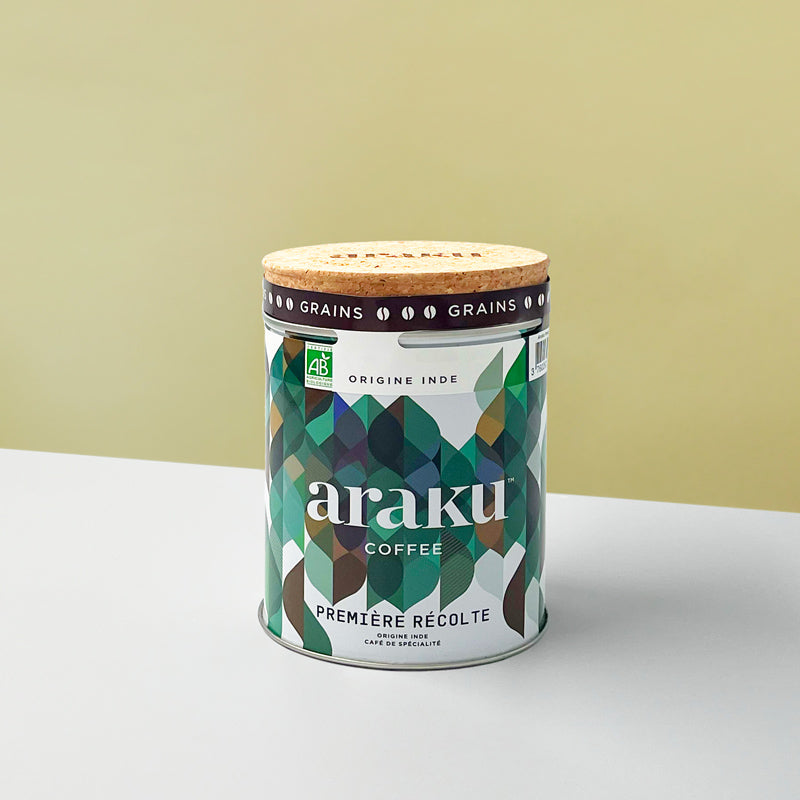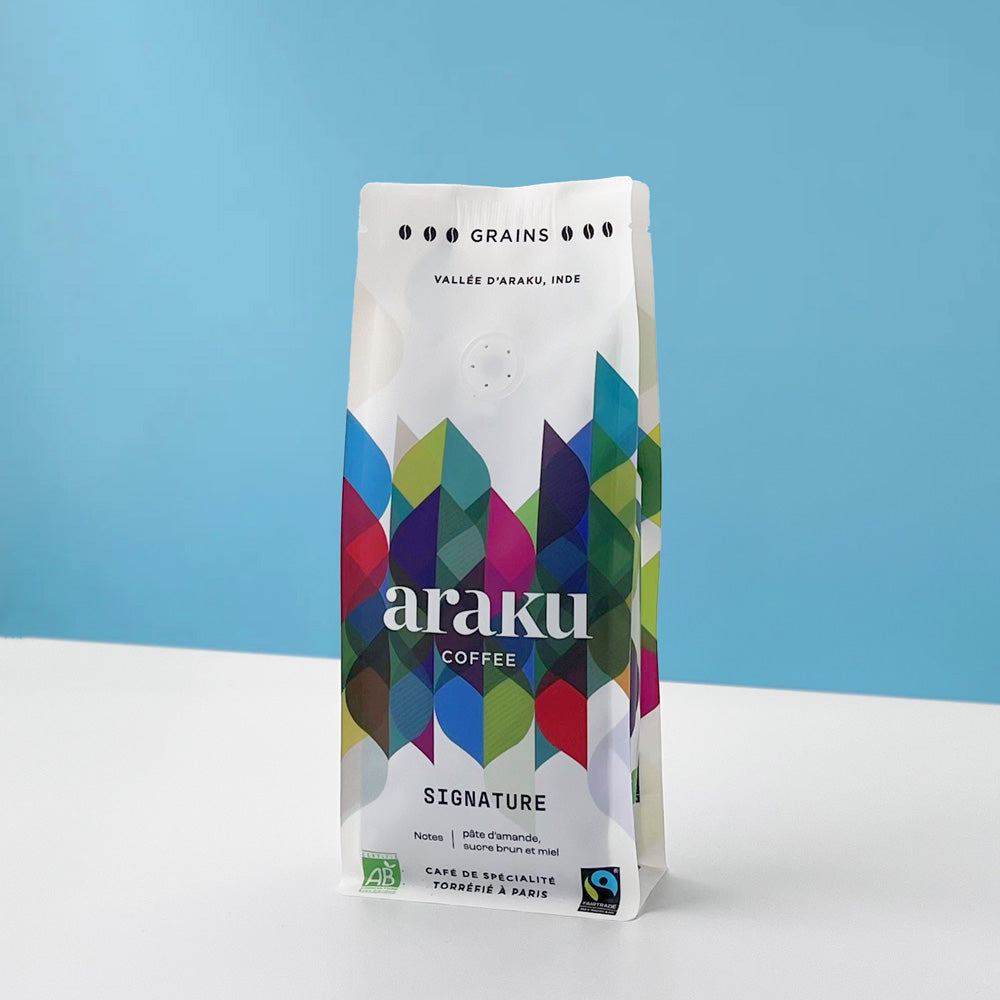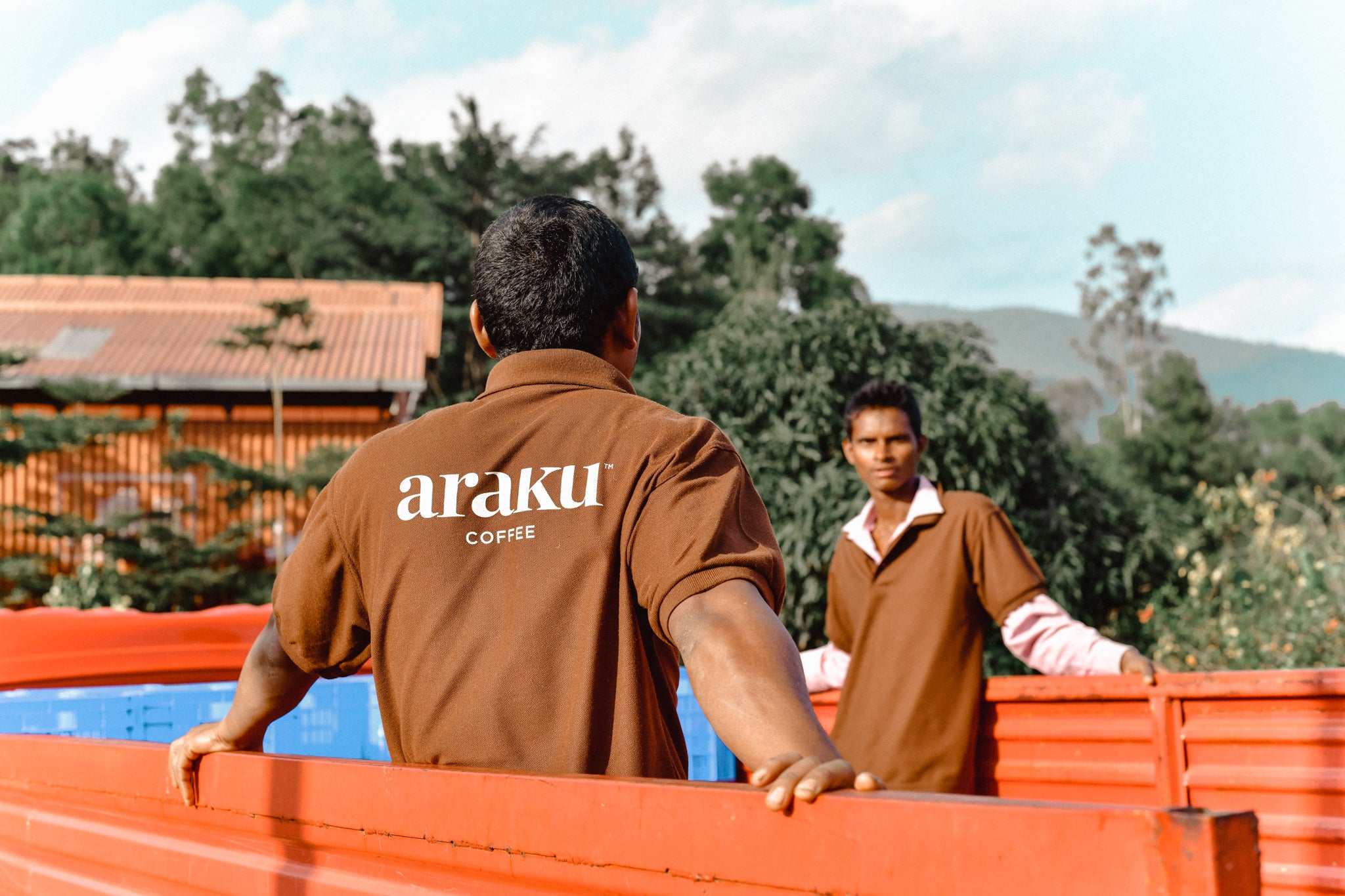WHY SHOULD YOU TASTE COFFEE?
Coffee has over 800 possible different flavor compounds. In comparison, wine only has 400. Depending on the coffee varieties, the amount of compounds varies, thus offering different aromas and flavors. Cultivating a "grand cru" is an art; Each coffee draws its character from the environment where it was grown, the nature of the soil, the climate, the harvest method, but also the processing of the coffee cherries . Coffee tasting is truly a unique experience, particularly because it allows you to distinguish the aromas of each terroir. Between floral, fruity and even caramelized aromas, you will quickly understand that each coffee is unique. In addition to discovering multiple aromas, coffee tasting offers the opportunity to better appreciate all the components that make up each variety. This will allow you to better understand the bitterness, acidity, roundness (the overall balance of a coffee), the body (the thickness of the coffee) and the finish (the persistence of the aromas in the mouth) of each great vintage. Without a doubt, you'll never drink your coffee the same way again after this.
We have dedicated an article specifically to explain to you how grand cru coffees stand out compared to other specialty grade coffees.
THE STEPS TO FOLLOW FOR AN OPTIMAL COFFEE TASTING
For a successful coffee tasting, a set of steps must be undertaken, as mentioned previously. You can obviously prepare and enjoy just a single coffee. However , the best way to taste coffee is by comparison. By comparing two or more coffees, the unique characteristics of each are accentuated. This tasting exercise is also a superb activity to do with friends or family. Two people who taste the same coffee can recognize very different aromas!
Below, we present the steps to a succesful tasting of two great coffees:
- Grind your coffees to a medium grind size, and pour the ground coffee into a cup. Clean the grinder and repeat this operation for the second coffee.
- Smell both cups and note the aromas emanating from each coffee before brewing.
- Heat you water to a temperature between 93 and 96°C. Then pour the water over the ground coffee, making sure all the coffee is completely soaked. Let the coffee steep for 4 minutes.
- After that, gently stir the surface of the coffee, breaking the crust. When you break the crust, don't hesitate to smell the aromas that escape.
- Skim off the foam and floating bits with a spoon (remember to use a different spoon for each cup). When the coffee is at the right temperature, dip your spoon in it and slurp the coffee and a little bit of air at the same time . This will allow you to experience more aromas through a process called retro-olfaction .
Take the time to analyze the aromas that these two coffees evoke to you and their textures. Please note that the coffee beans selected by Araku Coffee are ideal for coffee tasting. Indeed, each one of our coffees has its own identity, unique flavors and aromas, which vary significantly from one coffee to another. After finding your favorite coffees, all you have to do is introduce them to your loved ones.

